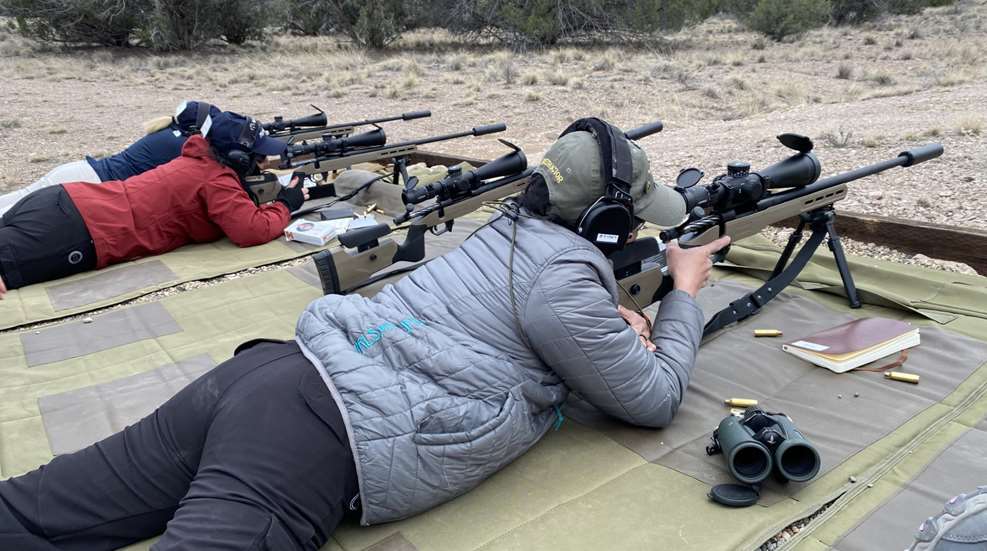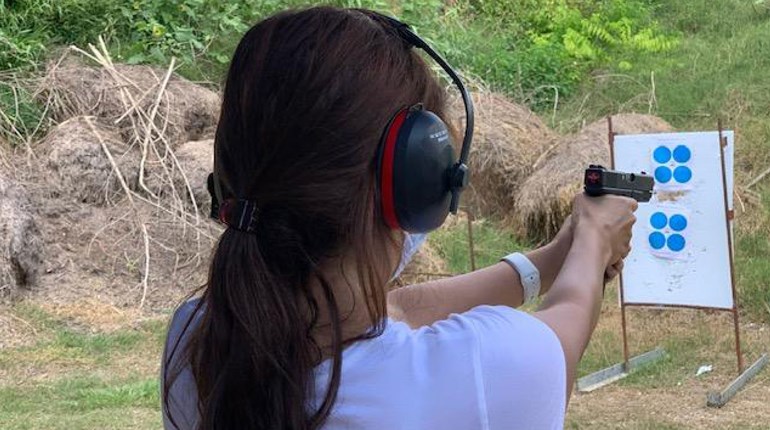
There are a lot of terms and concepts that are used when referring to firearms, ammunition and shooting fundamentals that are difficult to explain, especially to beginners. It does not matter if you are a credentialed NRA Instructor, self-taught instructor, or just being helpful and teaching friends, family members, or coworkers on the weekend. You will be asked questions about firearms and shooting techniques. It is your responsibility to give your students the correct information for their safety and success, while maintaining your credibility.
Terms such as twist rate in rifle barrels, sectional density of bullets, and threat continuum are easy to bluff your way through if you, as an instructor, are not familiar with them. Fortunately for some instructors, beginning shooters do not know what to ask, so many of these questions are avoided. One of the hardest concepts to explain is parallax. Unfortunately, this question is hard to ignore when your student is pointing to the knob on their scope and asking point blank, “what is parallax?”
The concept of parallax is difficult even for experienced shooters to explain. The difficult part of parallax is that even though the instructor may understand the concept, explaining it sufficiently so that the student gets it may be the challenge.
What Is Parallax
Parallax is when the focal plane of an object in the scope is offset from the reticle in relationship to the position of your eye. It is basically an optical illusion between the reticle of the scope and the target. When it appears that you are on target, in reality, you are not. Parallax is more of an issue with longer distances.
Have you ever looked through a scope and the reticle changes position of the target as you move your head? This is Parallax. The scope’s reticle or the target did not move, but the point of impact did. The most common example of demonstrating parallax is to take a sheet of paper and, with a pencil or pen, place a mark on the page. Next, take a glass and add about an inch of water to the bottom. While holding the glass approximately an inch to an inch and a half above the dot, slowly move the glass in different directions while looking at the mark. You will see the dot move. That is because the water in the glass and the dot on the page are not on the same focal plane. This is parallax.
The only way to prevent parallax is to hold the center of your pupil perfectly, in a straight line with the center of the reticle. This must be done perfectly every time. If your head is slightly off center, your shot will be slightly off. If your head is off by a lot, your shot will be off by a lot. This is also why it is important to have the correct scope rings, so the height of your optic is close to natural pupil and reticle alignment.
Some scopes have a parallax adjustment turret. Scopes with parallax adjustments have an additional turret opposite of the windage turret adjustment. These adjustments often have range marks on the side. When you correct parallax, you are putting the scopes reticle on the same focal plane as the target. Think of it like this—hold a pencil up and align the eraser with an object on the wall. As you move your head, the object that was aligned with the eraser is no longer in line. Now lay the pencil on an object on a mark on a table. The eraser and mark are in alignment. As you move your head, the eraser remains in alignment with the mark. That is because they are now on the same focal plane.
Scopes that do not have a parallax adjustment have internal corrections at shorter distances. Shotgun scopes and rifle scopes are interchangeable. On shotgun scopes without adjustments, the parallax is set at either 60 or 75 yards. On rifle scopes without adjustments, the parallax is set at either 100 or 150 yards.
Sometimes the parallax adjustment is referred to as a side focus or fine focus. This is technically incorrect. Scopes with a parallax adjustment have a very narrow depth of focus so when the corrections are made, the reticle and the target are placed on the same focal plane. A positive side effect of this is that the target or object becomes a sharper image.
How To Prepare a Scope for Adjust Parallax
Before you can adjust the parallax adjustment, you need to make sure the diopter of the scope is properly adjusted. To do this, loosen the locking ring on the bell or eyepiece of the scope. Set the parallax adjustment to infinity while the eyepiece is in the middle of its travel. While looking through the scope at a clear sky or white wall, adjust the eyepiece until the reticle is in focus. Do this in small increments. Once the reticle is in focus, tighten the locking ring to keep it in place.
It is important to remember that once your eyepiece or diopter is set, it should be left alone. This does not mean that if you adjusted the diopter 10 years ago, it would never need to be adjusted. As your eyes change, the diopter might need to be adjusted.
How To Adjust Parallax
The first thing you need to do is range your target. This can be done with any rangefinder. Of course, the more accurate the rangefinder, the more precise your parallax adjustment will be. Most parallax adjustments are the 50-yard, 75-yard, or 100-yard increments. Your reticle and target should now be on the same focal plane.
The problem shooters make is adjusting the eyepiece instead of the parallax when the target is out of focus. If your parallax is set at 250 yards and the object you are looking at is at 450 yards, your parallax needs to be adjusted. If you adjust the eyepiece instead of the parallax adjustment, you increase the parallax and the distance your bullet will be off mark.
Is Parallax Adjustment Important
Is parallax adjustment important? That is a hard question to answer. It really depends on what the shooter expects out of his or her projectile. It also depends on what activity the shooter is engaged.
If you are a short- or long-range target shooter, parallax correction might mean the difference of winning or losing a competition. How much parallax is considered a factor in a competition depends on the course. In other words, are you shooting for score, shooting steel plates, or shooting for time.
Most hunters shoot at game animals less than 350 yards. The kill area of a whitetail deer is 9 inches in diameter. What this means is that if you are aiming at the center of a whitetail deer’s kill zone and parallax throws your point of impact off by 1 inch to 1 ½ inches, the outcome should come out the same—a successful hit and a recoverable animal.














































